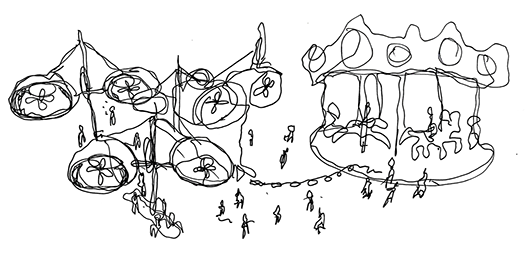WindNest Powered by Art.
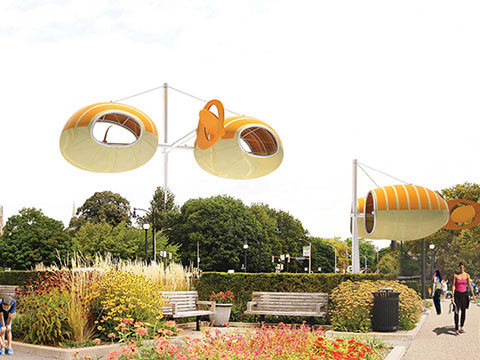
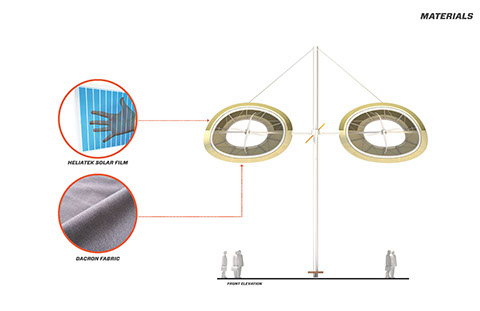

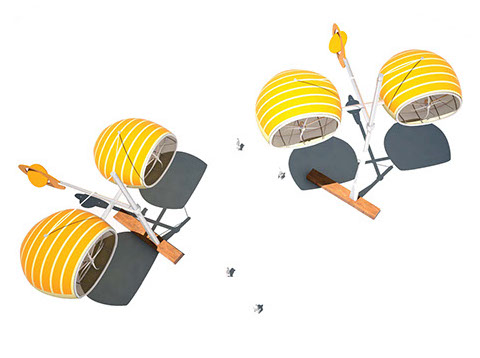
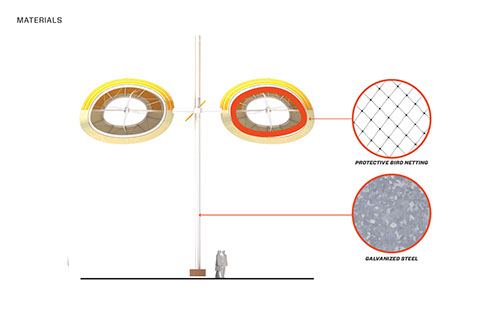
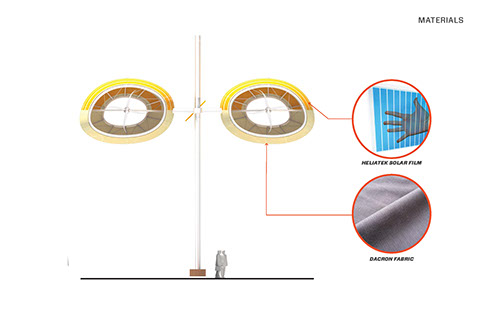
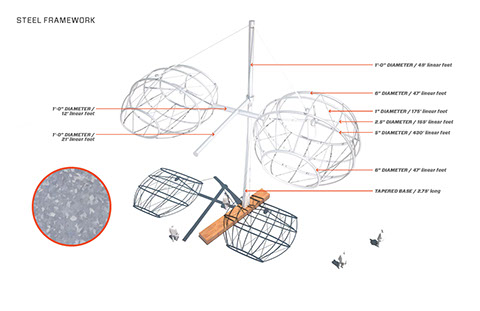
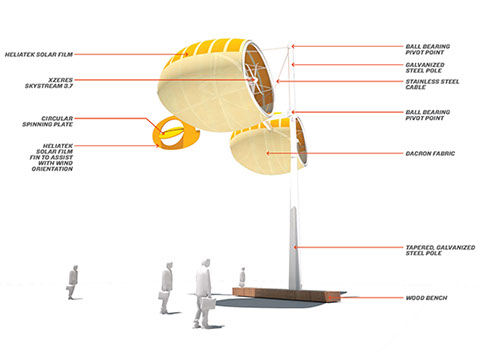
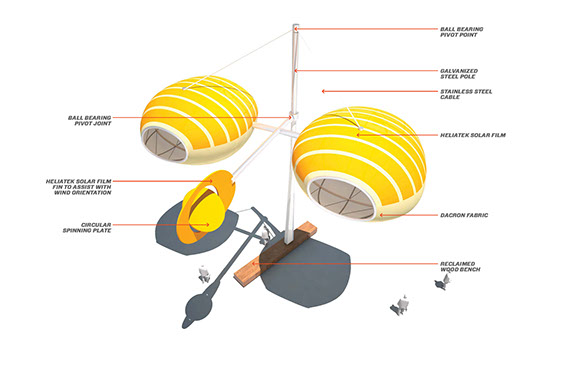

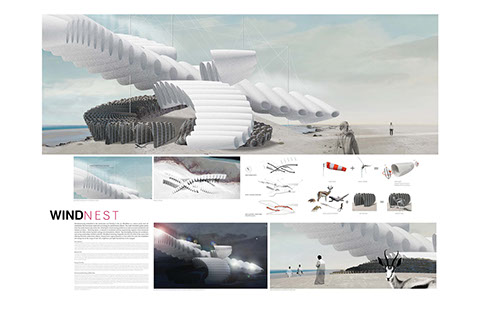
WindNest will present a model for what renewable energy generation can aspire to be within urban landscapes and will provide:
Education
WindNest will provide a place for a broad audience to learn about sustainable systems and to see renewable energy in action
Healthy Environment and
a Sustainable Resource
Greenhouse gas emissions reduction directly from the clean energy generated by WindNest and the objective of the project is to stimulate community support for more renewable energy production within the city
Creative Placemaking
City residents and tourists will benefit from the enlivened public space, which is currently the most underutilized section of Schenley Plaza
Economic Development
WindNest will bring positive attention to the city and increase foot traffic within the vicinity of the site. WindNest will be a symbol of Pittsburgh’s commitment to a green economy and will contribute to the overall livability of the city.
WindNest Schematic Diagrams
Front elevation looking into the wind pods.
The top surface of the pods is covered with flexible thin film photovoltaic material to generate electricity from the sun.
WindNest
Rendering as seen from the Carnegie Museum
The bright orange rotating fin behind the pods works to rotate the entire structure so that the wind turbines are facing into the wind coming from any direction.
In that sense, WindNest is also a weather vane (sort of like the kind you might see on top of an old barn) that tells you which way the wind is blowing!
WindNest Schematic Diagrams
View from above
WindNest Schematic Diagrams
Front elevation looking into the wind pods.
Birds are protected from the wind turbine blades by a fine netting at both sides of the pods. This also ensures that no actual nesting will occur inside WindNest!
WindNest Schematic Diagrams
Front elevation looking into the wind pods.
The top surface of the pods is covered with flexible thin film photovoltaic material to generate electricity from the sun.
WindNest Structure
A view into the structural framework shows how the pods are constructed.
WindNest Schematic Diagrams
The bright orange rotating fin behind the pods works to rotate the entire structure so that the wind turbines are facing into the wind coming from any direction.
In that sense, WindNest is also a weather vane (sort of like the kind you might see on top of an old barn) that tells you which way the wind is blowing!
WindNest Schematic Diagrams
The bright orange rotating fin behind the pods works to rotate the entire structure so that the wind turbines are facing into the wind coming from any direction.
In that sense, WindNest is also a weather vane (sort of like the kind you might see on top of an old barn) that tells you which way the wind is blowing!
WindNest Concept
Renewable energy, recreation, and entertainment come together in the WindNest artwork.
WindNest was originally designed for the LAGI2010 competition for a site in Abu Dhabi
Designed by Clare Olsen and Trevor Lee
The concept for the ground plane was to provide a habitat for the animals that nest in the area. In the new urban context of Schenley Plaza, the ground plane will provide a habitat for urban dwellers like you!
1 – 11
<
>
WindNest is a unique renewable energy installation designed as a safe and educational public amenity for visitors. The installation demonstrates the potential for our sustainable infrastructures to be joyful contributions to creative placemaking. Walking through WindNest, visitors will experience a set of moving cloud formations overhead.
As they linger on their way through this beautiful place, they will discover that the pods above them are at that very moment generating clean electricity with a mix of wind and solar technologies. Perhaps they'll take a moment to sit on the wood bench and charge their phone with the energy that the artwork is generating. From there they will see an interpretive display showing how much electricity is being generated at that very moment from wind and solar, and how much has been generated since its installation.
Designed by Trevor Lee (suprafutures), WindNest was an entry to the LAGI 2010 design competition and was originally conceived for a coastal site in Abu Dhabi. In 2013, it was selected from a LAGI shortlist of candidates for construction in Pittsburgh, Pennsylvania in consultation with project supporters. WindNest has since been redesigned for its new urban context, with an eye on providing an exciting new place in the heart of the city.
Why is WindNest Important?
WindNest is an experimental urban prototype as well as a public artwork. Over the course of its design life data will be collected that will inform future Land Art Generator Initiative projects. This will include detailed energy production and performance as well as feedback from neighbors and visitors.
An objective of WindNest is to show how renewable energy infrastructure can be seamlessly integrated into urban environments, especially those cherished places in the city that would be unlikely candidates for wind turbines or solar panels.
Pittsburgh is the perfect place to be installing one of the first built "land art generators." It is in the eastern states where the mix of electricity generation is high in coal that distributed renewable energy solutions will have the greatest impact on climate and public health. According to a paper in the Proceedings of the National Academy of Sciences, ‘A wind turbine in West Virginia displaces twice as much carbon dioxide and seven times as much health damage as the same turbine in California.’
Utilizing Pika Wind Turbines, WindNest will generate enough energy to power the PNC Carousel!
WindNest Energy Production
Demand Load of the PNC Carousel in Schenley Plaza
6,250 kWh per year
Energy Production of WindNest
(two poles=four turbines + thin film)
8,000 kWh per year
(less lighting demand and phone charging)
SUPPORTED BY
Heinz Endowments*
Henry Hillman Foundation*
Horne Family Foundation
National Endowment for the Arts
*The Heinz Endowments supports efforts to make southwestern Pennsylvania a premier place to live and work, a center for learning and educational excellence, and a region that embraces diversity and inclusion.
*The Hillman Foundation is dedicated to improving the quality of life in Pittsburgh and southwestern Pennsylvania.
